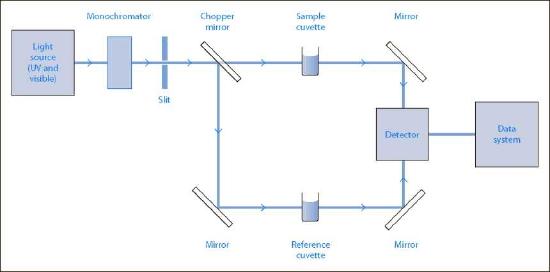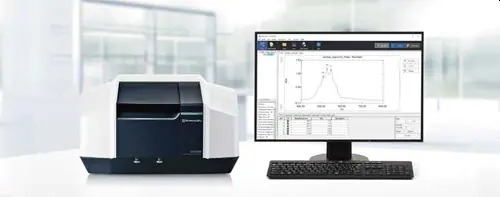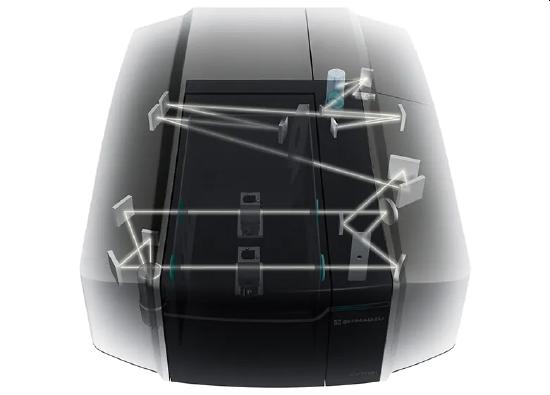8.4.3: Double Beam Instruments for Absorption Spectroscopy
- Page ID
- 342743
Most research grade instruments found in academic and industrial labs are double beam instruments. An important advantage of a double-beam spectrophotometer over a single-beam spectrophotometer is that a double beam instrument permits compensation for source power fluctuations greatly improving S/N and extension to dilute solution samples and measurements with gases.
n a double beam configuration, the beam from the light source is split in two. One beam illuminates the reference standard and the other illuminates the sample. The beams may be recombined before they reach a single monochromator and a single detector. In some cases two monochromators and two monchromators may be used although detector matching problems can arise.. The splitting of the beam is normally accomplished in one of two manners: statically, with a partially-transmitting mirror or similar device, or by attenuating the beams using moving optical and mechanical devices (a chopper wheel). Double beam instruments became quite popular in the early days of spectrophotometry due to the instability of light sources, detectors, and the associated electronics. Figure \(\PageIndex{1}\) below illustrates the general configuration of a double beam spectrophotometer.

Figure \(\PageIndex{1}\): The general layout of a double beam instrument for absorption spectroscopy.
The double beam UV-Vis in our instrument room is the Shimadzu UV 2600i purchased in Spring 2020 and shown in Figure \(\PageIndex{2}\).

Figure \(\PageIndex{2}\): Th Shimadzu UV 2600i instruemt with computer.
The Shimadzu 2600i is a double beam, single 0.278 m monochromator, single detector covering the wavelength range of 185 nm to 900 nm. The instruments both a 50 W tungsten halogen lamp for the visible and a deuterium lamp for the UV. A mirror on a turret selects the light from either lamp and the wavelength at which the switch occurs is adjustable. The instrument contains a photomultiplier detector (PMT). A cartoon of the optical layout is shown in Figure \(\PageIndex{3}\).

Figure \(\PageIndex{3}\): The beam path in the Shimadzu UV 2600i.
The wavelength selector slits are adjustable yielding spectral band with of 0.1, 0.2, 0.5, 1, 2, or 5 nm. The scanning speed of the monochromator can be adjusted from 4000 to 0.5 nm/min. The UV-2600 is also equipped with Shimadzu's proprietary Lo-Ray-Ligh grade diffraction grating, which achieves high efficiency and low stray light levels allowing the Beer's Law limit of linearity to approach 5 absorbance units.

